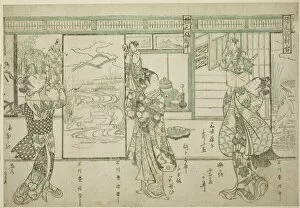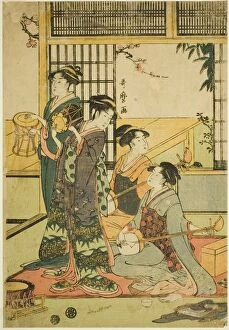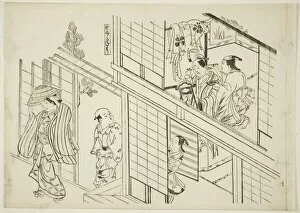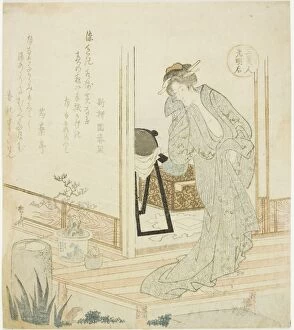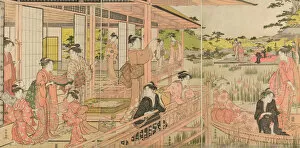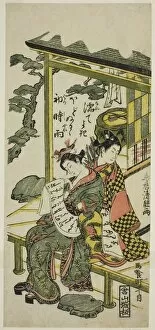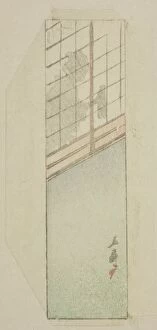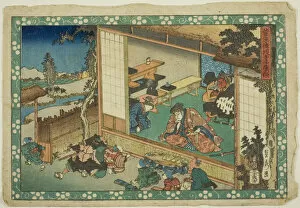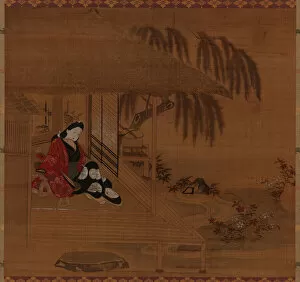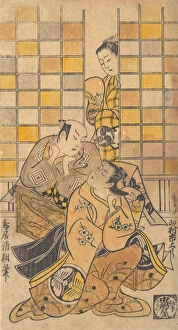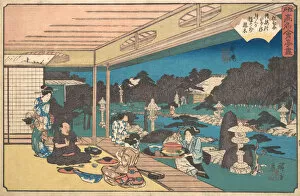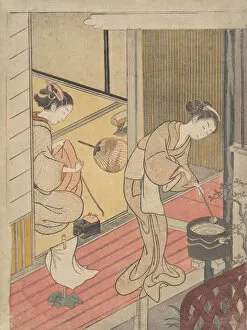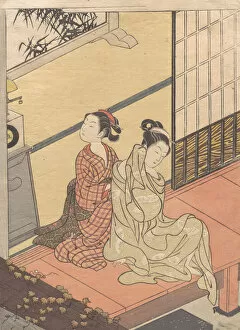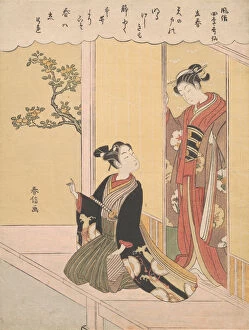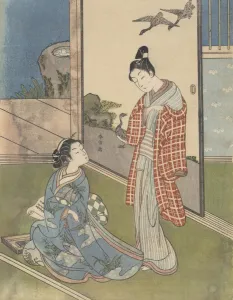Sliding Screen Collection
"Exploring the World of Sliding Screens
All Professionally Made to Order for Quick Shipping
"Exploring the World of Sliding Screens: A Glimpse into Japanese Art and Culture" Step into the captivating world of sliding screens with these remarkable artworks from various periods in Japanese history. From Senjojiki uki-e no zu, a perspective picture of a large room dating back to 1765, to Amago buyuden created by Hosai Shugetsu in the late 19th century, each piece offers a unique glimpse into Japan's rich artistic heritage. One such masterpiece is The Shrine Dancers (Miko) Ohatsu and Onami by Ippitsusai Buncho from 1769. This exquisite depiction captures the grace and elegance of traditional shrine dancers, transporting us to an era steeped in tradition and spirituality. In contrast, Young Men of Fashion - A Set of Three by an anonymous artist from the early 1750s showcases the vibrant energy and flamboyance associated with youth culture during that time. These prints offer a fascinating window into the fashion trends and social dynamics prevalent among young men at that period. The artistry extends beyond human subjects as well. Puppeteers - A Set of Three by Ishikawa Toyonobu circa 1752 brings puppets to life on sliding screens, highlighting their role as entertainers in traditional Japanese theater. Drums and Shamisen by Kitagawa Utamaro transports us to a musical realm where we can almost hear the rhythmic beats resonating through our souls. The intricate details captured on this screen evoke both auditory delight and visual splendor. Moving forward in time, we encounter The Nakadaya teahouse created by Kitagawa Utamaro around 1794-95. This artwork invites us into an intimate setting where tea ceremonies were conducted with utmost precision – showcasing not only aesthetic beauty but also cultural significance.







